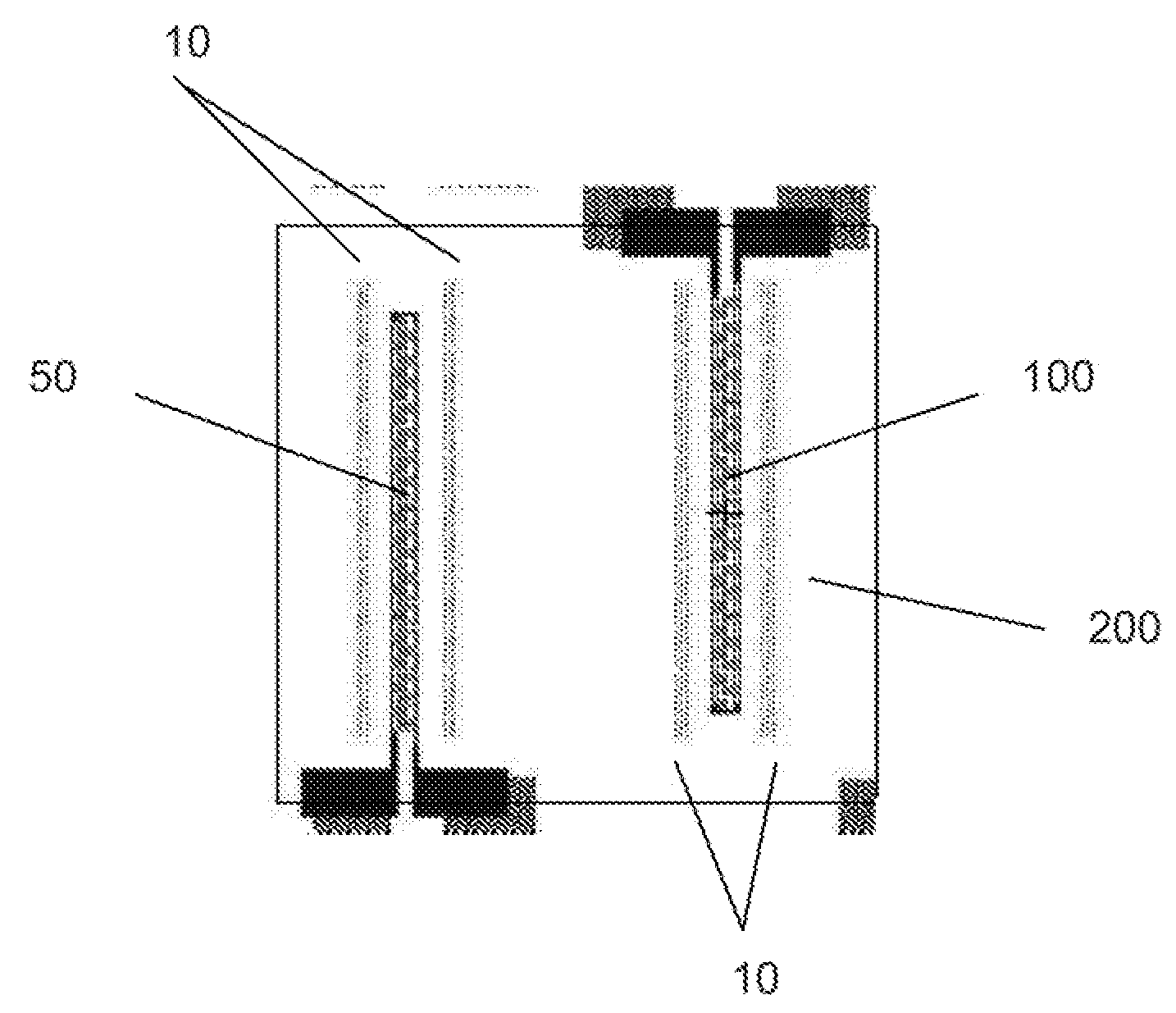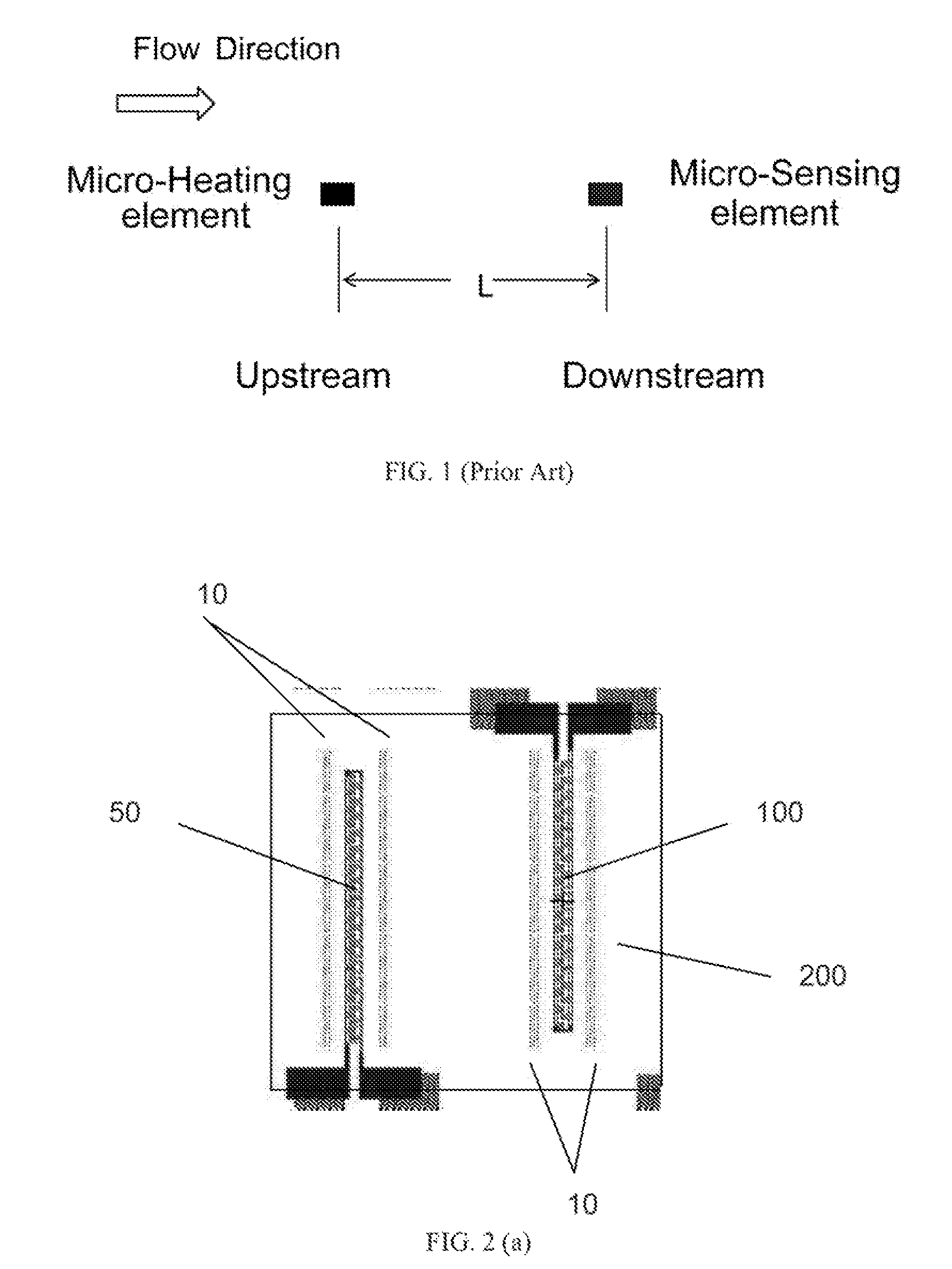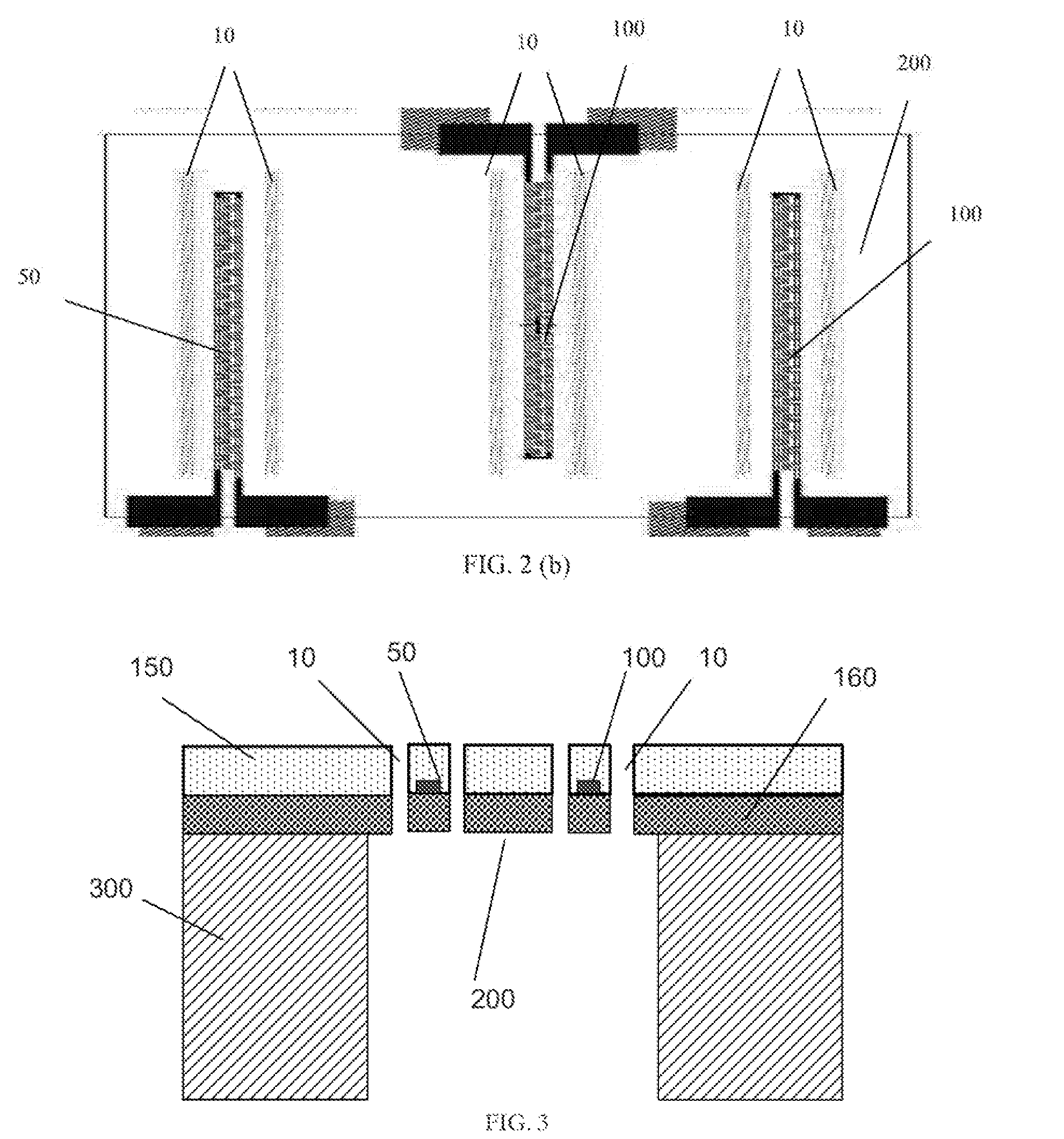MEMS time-of-flight thermal mass flow meter
a mass flow meter and time-of-flight technology, applied in the direction of volume/mass flow measurement, measurement devices, instruments, etc., can solve the problems of substantial performance alteration, failure of operation, and variation of thermal response, and achieve the effect of superior passivation technique and low surface energy
- Summary
- Abstract
- Description
- Claims
- Application Information
AI Technical Summary
Benefits of technology
Problems solved by technology
Method used
Image
Examples
Embodiment Construction
[0022]FIG. 1 illustrates the basic operation principle of thermal time-of-flight sensor. The micro-heating element is disposed at the upstream of flow media while the micro-sensing element is located at the downstream of flow media. If the distance between two elements is L and the traveling time of heat wave travel from heater to sensor is t, then the flow speed, V, will be solved easily as L / t.
[0023]FIG. 2 (a) illustrates a top view of preferred sensor topology. A time of flight thermal sensor is mainly composed by one heater and one sensing element only. The serpentine shape thermistors 50 and 100 are the micro-heating and micro-sensing elements made of high temperature coefficient of resistance (TCR) materials such as Pt, Au, MgO, and TaN etc. Component 50 and 100 are disposed on top of a suspending membrane 200 which can provide a good thermal isolation property. There are two opens slots (components 10) on the membrane along each of thermistors which can block off the lateral ...
PUM
 Login to View More
Login to View More Abstract
Description
Claims
Application Information
 Login to View More
Login to View More - R&D
- Intellectual Property
- Life Sciences
- Materials
- Tech Scout
- Unparalleled Data Quality
- Higher Quality Content
- 60% Fewer Hallucinations
Browse by: Latest US Patents, China's latest patents, Technical Efficacy Thesaurus, Application Domain, Technology Topic, Popular Technical Reports.
© 2025 PatSnap. All rights reserved.Legal|Privacy policy|Modern Slavery Act Transparency Statement|Sitemap|About US| Contact US: help@patsnap.com



